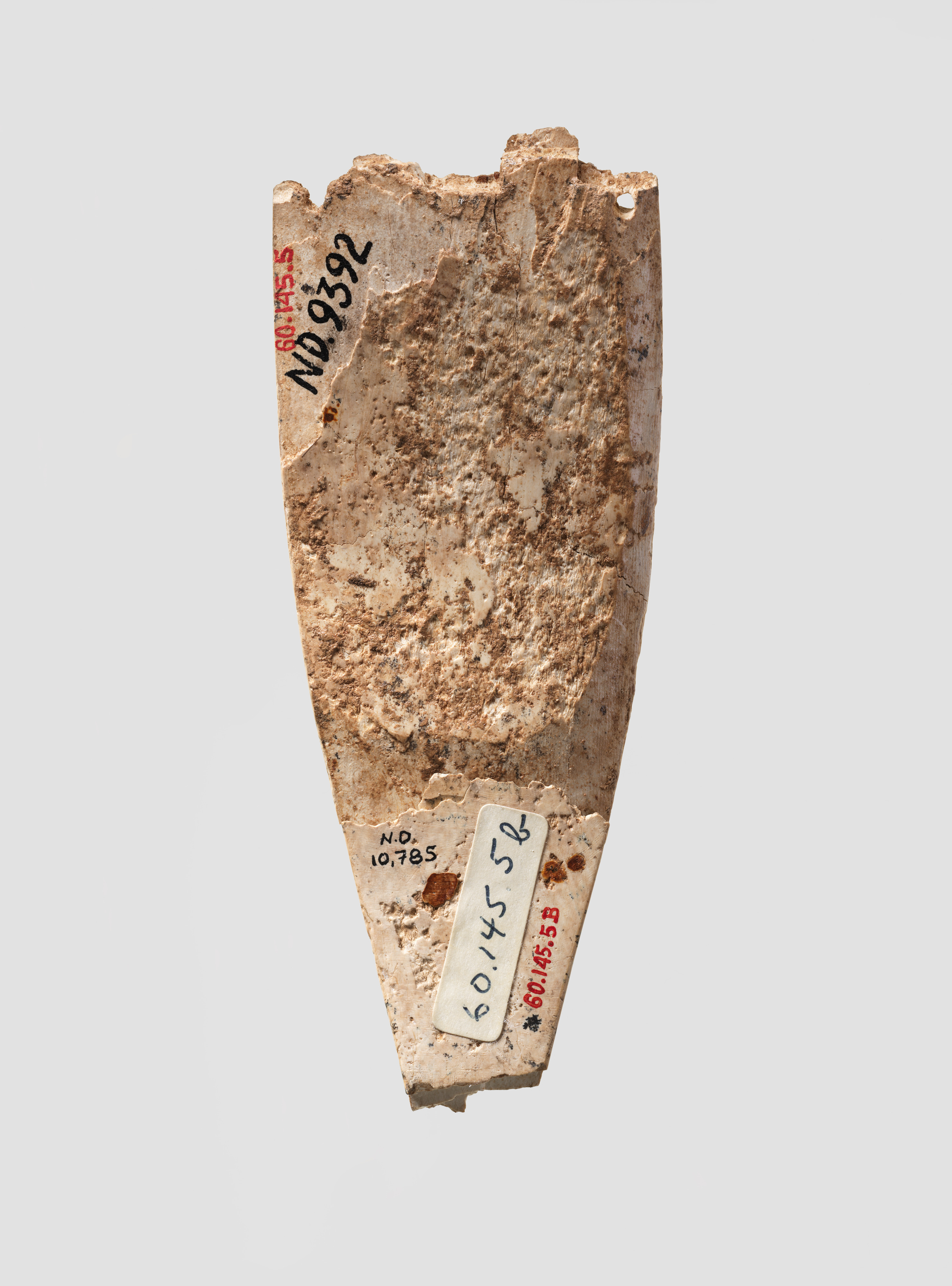Horse frontlet with an incised guilloche design
Not on view
This ivory plaque was found in a storage room in Fort Shalmaneser, a royal building at Nimrud that was used to store booty and tribute collected by the Assyrians while on military campaign. Its roughly triangular shape indicates that it was used as a horse frontlet, a component of equestrian armor that covered the forehead of a cavalry horse. An incised decorative border runs around the edge of the frontlet, taking the form of a guilloche, or row of interlocking spirals and circles. The surface is undecorated and divided by a vertical raised ridge, triangular in cross-section, decorated on each face with a zig-zag pattern. At the top edge, the frontlet was connected to an additional piece via a hinge, which is no longer extant. Both pieces were probably attached to a separate textile or leather backing, also no longer preserved. The Assyrian cavalry was an important component of the empire’s armed forces, and mounted warriors as well as horse-drawn chariots are frequently depicted on the stone reliefs that decorated the rooms of the Assyrian palaces. Large quantities of carved ivory horse trappings, including frontlets, eye guards or blinkers, and bridle fittings, were found in the royal storerooms at Nimrud. Since ivory is a delicate material, these horse trappings may have been intended to be worn only on parade, not in battle.
Built by the Assyrian king Ashurnasirpal II, the palaces and storerooms of Nimrud housed thousands of pieces of carved ivory. Most of the ivories served as furniture inlays or small precious objects such as boxes. While some of them were carved in the same style as the large Assyrian reliefs lining the walls of the Northwest Palace, the majority of the ivories display images and styles related to the arts of North Syria and the Phoenician city-states. Phoenician style ivories are distinguished by their use of imagery related to Egyptian art, such as sphinxes and figures wearing pharaonic crowns, and the use of elaborate carving techniques such as openwork and colored glass inlay. North Syrian style ivories tend to depict stockier figures in more dynamic compositions, carved as solid plaques with fewer added decorative elements. However, some pieces do not fit easily into any of these three styles. Most of the ivories were probably collected by the Assyrian kings as tribute from vassal states, and as booty from conquered enemies, while some may have been manufactured in workshops at Nimrud. The ivory tusks that provided the raw material for these objects were almost certainly from African elephants, imported from lands south of Egypt, although elephants did inhabit several river valleys in Syria until they were hunted to extinction by the end of the eighth century B.C.
Due to rights restrictions, this image cannot be enlarged, viewed at full screen, or downloaded.
This artwork is meant to be viewed from right to left. Scroll left to view more.



